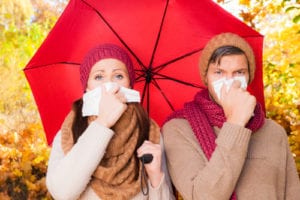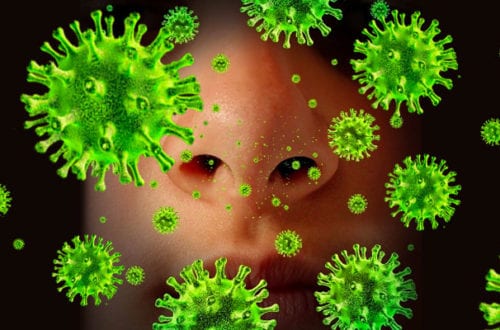A century ago, asthma was rare. Now it is anything but that! Asthma is one of the few chronic diseases on the rise: its incidence has soared by 73% percent since 1982. Nearly 17 million people have asthma, including 5 million children. Asthma cuts across all class and race lines and can last a lifetime. The cost to our country is staggering. Almost $2 billion a year is spent to treat pediatric asthma. Parents with asthmatic children lose $1 billion a year by staying home to care for their children when struggling with respiratory health challenges.
There is a growing list of theories as to why asthma has been increasing at a frightening pace. Dr Richard Firshein, a specialist with children’s asthma, in his book “Your Asthma – Free Child surmises.” These include overzealous immunization programs, junk food diets including GMO exposed foods and antibiotic overuse. Common irritants to the lungs are tobacco and forest fir smoke, chemical fumes, very cold air, bacterial & yeast overgrowth infections, aspirin, sulfites and MSG (monosodium glutamate) but any food or air pollutant can be involved.
Doctors & naturopaths categorize asthma into the following forms: 1) Allergic asthma which is asthma caused by allergens inhalants that are breathed into the lungs This can include a wide range of inhalant allergens from dust & dust mites, pollens, grasses, animal dander and molds. Other irritants can be environmental chemicals such as smoke, diesel fuels, 2) Non allergic asthma, often triggered by chronic infections (both viral, yeast or bacteria) 3) Asthma resulting from emotional or physical situations (such as exercise) an often overlooked cause of asthma not recognized by much of the medical community is asthma as a reaction to foods, either allergic or intolerance. More evidence for this type of trigger is mounting.
Food Triggers for Asthma
The Encyclopedia of Natural Medicine lists common problem foods for asthmatics as eggs, peanuts, wheat, sugar, dairy products, citrus fruit, seafood, peanuts & nuts and many food additives. One respiratory doctor, Dr. James Braly states, “The provocateur may be foods. Wheat, milk, eggs & sugar are common culprits. In many cases food colorings, food preservatives & other chemical additives to foods are at fault.” Food Allergy and Intolerance states “Food allergies are a very important cause of asthma but is often overlooked.” It is overlooked because the usual allergy skin (prick) tests are often negative for foods. However, medical studies have found that “immune complexes containing food antigens may be detected in the blood of asthmatic subjects undergoing acute asthma challenges, and these may trigger bronchoconstriction. The abnormal immune reactions start in the gut however….” This is clear evidence that food molecules are capable of triggering off asthma attacks. After citing several more medical studies, the chapter on asthma concludes “Food intolerance is a very substantial cause of asthma as well as many other physical symptoms. This fact is very much neglected due to the lack of awareness that foods may be responsible and because the skin prick tests with foods is often negative. Asthma may be ascribed solely as inhalant irritants upon the lungs by the traditional medical community.
Naturopathic doctor, Dr Carolee Bateson-Koch in her book Allergies, shares “Asthma can be helped to a great extent by the removal of the above listed irritants. Children especially respond quickly and have a good chance of becoming well. When beginning any new asthma program never discontinue any prescribed medications. Any asthma attack must always be treated promptly with prescribed medications. The health care provider should have the means of screening an individual for chronic infections, including candida albicans, other fungi like Aspergillius, viruses and bacterias”
Researchers at John Hopkins University recently reported that the increase in microscopic soot & smoke particles are likely to be a significant cause of asthma. With the increase of forest fires burning up millions of acres of forest land, the particles we are all exposed to as secondary smoldering fires… these particles in the air are so small that they evade our bodies’ natural filters and become embedded deep in the lungs. In later blogs I will be addressing solutions for these smoke infested challenges in our urban centers. It is one of my passions to support individuals and families to find coping strategies to heal and balance their lungs.
Other research has suggested that colds are the most common triggers of asthma in the fall, winter and spring. Many researchers put the blame for the raise in asthma rates squarely on our sick air, both indoors and outdoors. Except for the skin, the lungs are the only organ that is constantly exposed to the outside environment. The global rise in respiratory illnesses in the industrial world could well be attributed to the sick air we are increasingly forced to breathe.
 Certain people seem to be susceptible to asthma. These include the risk category of a genetic predisposition to it through parents & grandparents. Other risk factors include low birth weight or living in urban environments with exposure to fumes and chemicals. Exposure to a spectrum of inhalant toxins during the first few years of life can sensitize the body, making the immune system respond ever more frantically to further exposures.
Certain people seem to be susceptible to asthma. These include the risk category of a genetic predisposition to it through parents & grandparents. Other risk factors include low birth weight or living in urban environments with exposure to fumes and chemicals. Exposure to a spectrum of inhalant toxins during the first few years of life can sensitize the body, making the immune system respond ever more frantically to further exposures.





